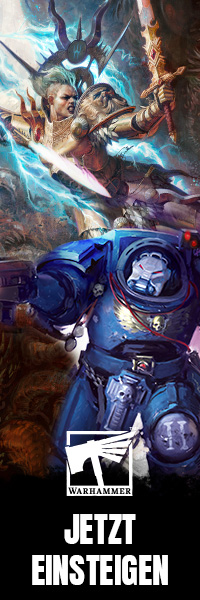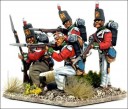Victrix: Einheit des Monats
Victrix stellt in ihrem neuesten Newsletter die Einheit des Monats vor, das 11. Regiment zu Fuss (North Devonshire).
The “Bloody Eleventh” gained a reputation as a tough and courageous regiment through its actions during the Peninsular War. The regiment was present at Busaco, Sabugal and Fuentes de Onoro but not heavily involved in these battles. However, the 11th were heavily engaged at the battle of Salamanca and it was here that the regiment earned its sobriquet “The Bloody Eleventh”. At Salamanca the regiment formed part of Clintons 6th Division and were the first to engage the French advance between 2 hills, the Greater and Lesser Araphiles. Despite grievous losses the 11th
Foot stopped the French advance. At one stage during the battle both colour sergeants and a musician were all decapitated by a single roundshot. The eventual cost to the regiment was great. Of 516 officers and men present no fewer than 55 were killed and 295 wounded a total of 340 casualties. For its bravery and fortitude during the battle the regiment was awarded the battle honour “Salamanca”.British line regiments of the time varied in strength due to the vagaries of recruitment and the amount of time units had been on campaign. At full compliment a regiment would be formed from 10 companies of 100 men per company, thus giving a theoretical regimental strength of 1000 men. The realities of recruitment, casualties, disease and desertion meant that regiments were continually under strength. Eight of the companies were “centre or battalion companies”
whilst the remaining companies were a light company and a grenadier company, these were collectively known as flank companies.
Regiments carried 2 colours (flags), a Kings Colour based on the Union flag and a Regimental colour based on the identifying colour of the regiment. In the case of the 11th Foot this identifying colour was green and was also used on the regiment’s facings (collars and cuffs) as a further way of distinguishing different regiments.The bulk of a regiment comprised the 8 centre companies of troops. In the picture to the left the centre company can be identified by the red and white plume worn on their “stovepipe” shako and the white shoulder tufts. The official uniform of 11th Foot also included a red jacket with green collars and cuffs (facings) and white “duck” trousers. Due to the harsh campaigning during the Peninsular war the white trousers often got replaced with trousers made from different materials woven from grey, cream and brown fabrics.
For Wellington neatness in the field was not as important as keeping his men well fed and equipped.To the right you will see an image of the light company. They are identified by the green plume on their shakos and the shoulder “wings” edged with white lace. The light company men were selected for their superior marksmanship skills, excellent fieldcraft and speed about the battlefield. Many light company men had been poachers or gamekeeper in their civilian lives.
Regimental commander used his “elite” light troops to scout ahead of the main body of troops, to form skirmish lines in front of the regiment and to protect the left flank of the regiment.The image on the left shows the other flank company, the grenadier company. They are recognised by the white plume worn on the shako and the shoulder wings edged with lace. The men who formed the grenadiers company were the biggest strongest and bravest men in the regiment. The grenadier company was always positioned on the right, securing the regiment’s right flank. Grenadier troops were used as shock troops often where the fighting was hardest. Field commanders would often group grenadier units from different regiments to create large bodies of elite troops.
In the image on the right two other aspects of British regimental dress are displayed. The drummer does not wear
a red jacket, instead he wears a jacket in the same colour as the regimental facings, in this case the green of 11th
Foot.Next to the drummer stands an NCO who is armed with a sword and a spontoon. Details of the dress of NCOs and officers will be covered in a future newsletter.Victrix produce two sets of figures that let gamers and modellers create British units for the Peninsular War. The sets are VX0002 British Peninsular Centre Companies and VX0004 British Peninsular Flank Companies. The sets have many arm and head options allowing a great variety of poses and giving distinctive character to the units built from them. The figures are manufactured in “hard” plastic that is easy to glue and paint. However, the plastic is still soft enough to cut and bend to make available the opportunity to carry out easy conversions. We will produce a news letter on converting Victrix figures sometime in the near future.
Stephen Hales & Julian Blakeney-Edwards
Link: Victrix









Hui, endlich mal Napoleonische Soldaten in einer Feuerlinie. Gefällt mir sehr gut das Regiment – und die Farben der Briten scheinen auch historisch korrekt getroffen zu sein…
Sie sehen jedenfalls so aus. Das reicht mir persönlich eigentlich schon. So genau nehme ich es beim TT und bei Filmen nicht mehr. Soll ja Spaß machen und keine Zwänge ausüben. 😉
Wirklich ein sehr schönes Regiment. Und ja, endlich mal im Gefecht.